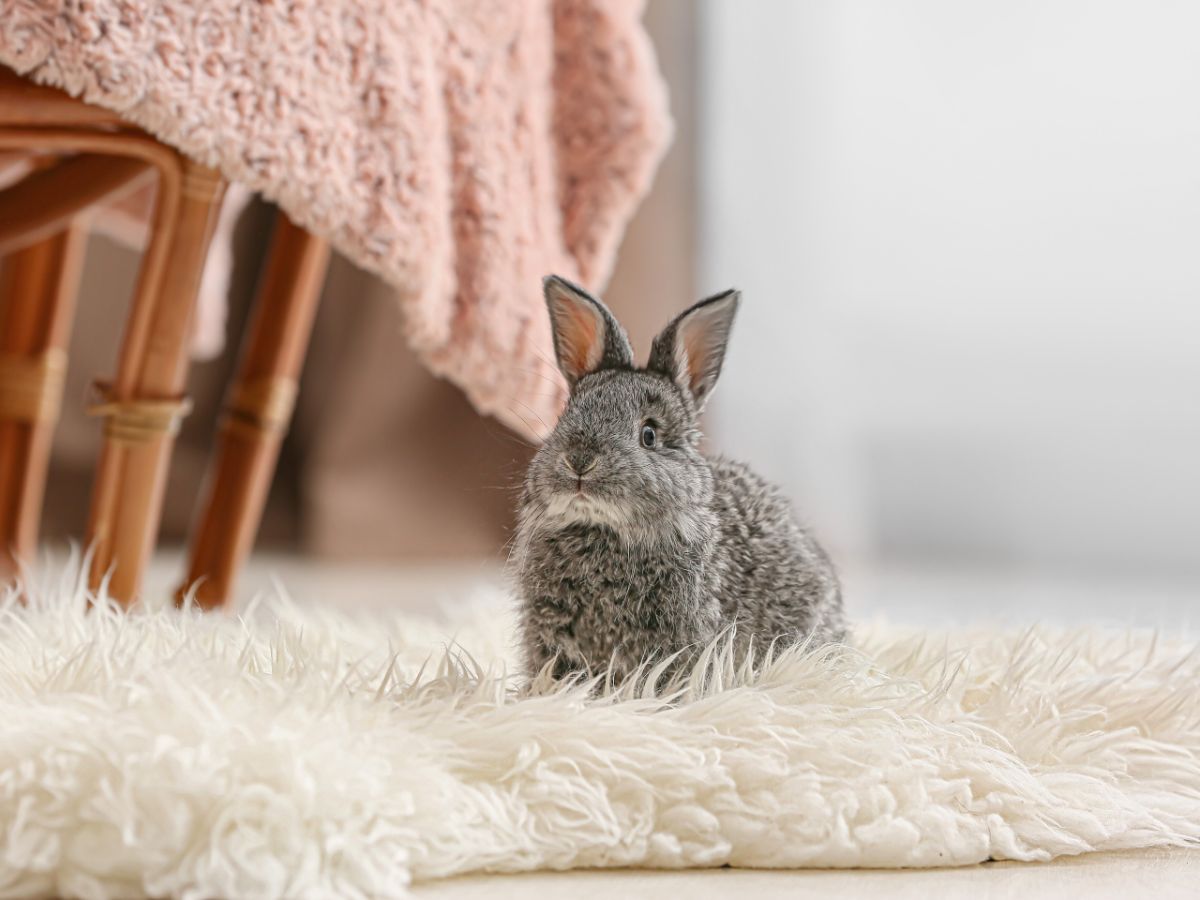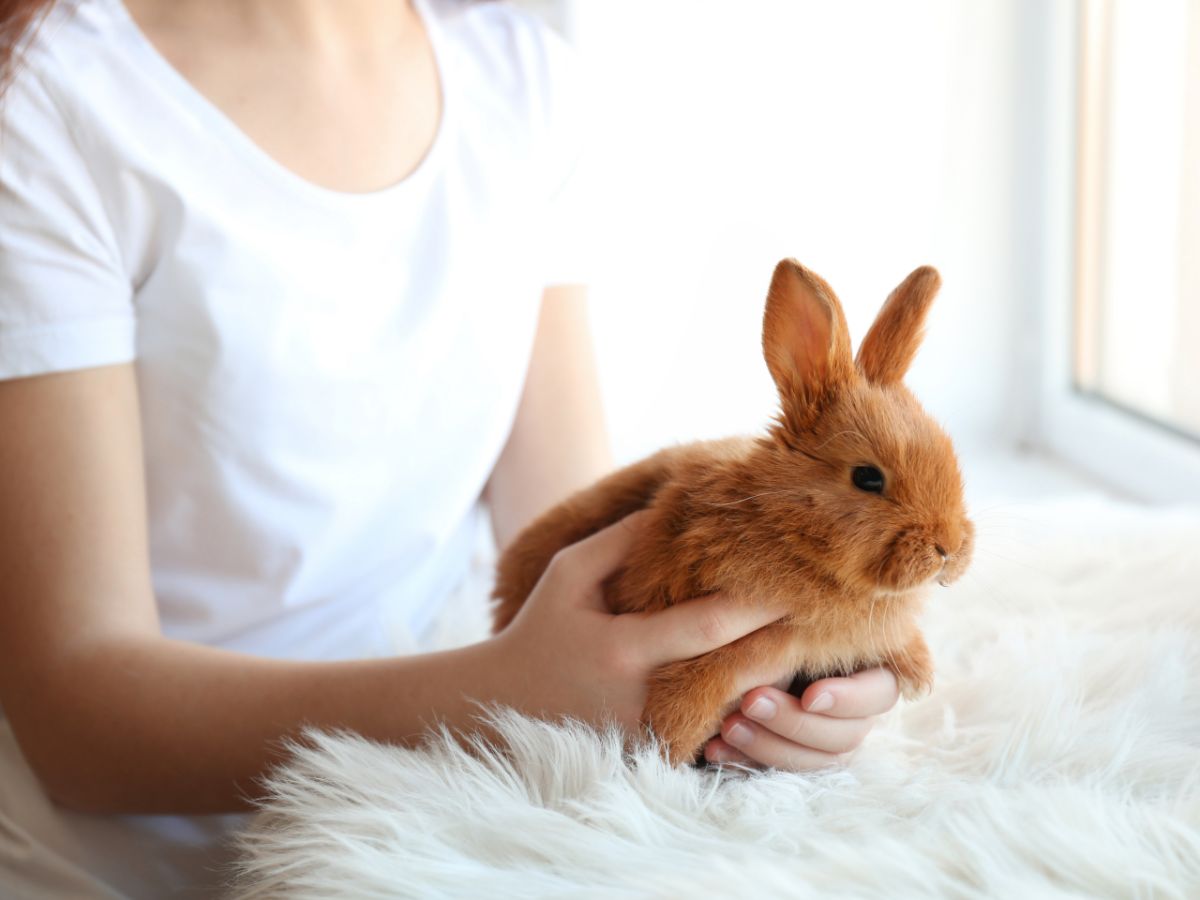Free-roaming has many benefits for your bunny, but it can spell disaster for your home and personal belongings if you are not careful. Bunny-proofing your home will minimize any damage caused by naughty bunnies, which is crucial if you rent. But how do you bunny-proof your home?
Bunny-proofing your home is easier than you may think, and with the right supplies, it can be cost-effective and look stylish. Among other things, you will need cord covers or a cable management kit for cords and wires, a sofa protector, and bitter apple spray for furniture and baseboards.
Rabbits’ curiosity, combined with their need to chew, makes any wooden item within their reach fair game. Fortunately, there are ways to safeguard your home against your bunny’s destruction!
Contents
How To Bunny-Proof Your Home
Rabbits are super curious and want to explore every nook and cranny, so check the house carefully before letting your rabbit out. If your bunny is young and small, you may need to take a few additional steps to fully bunny-proof your home.
Bunny-proofing is not that difficult, but a few handy gadgets make bunny-proofing even easier. Not all rabbits need excessive bunny-proofing, and you may find that as your bunny grows and learns what is and isn’t allowed, you can gradually remove some of your bunny-proofing.
Younger rabbits are particularly playful, and their mischief and rebellious streak increase as they hit puberty, just like human teens. We should note that without proper litter-training and neutering/spaying your rabbit, bunny-proofing will be like fighting a lost cause.
Here’s what you’ll need:
- Baby gate, puppy pen or ex-pen
- Clear shipping tape
- Adhesive corner guards*
- Bitter-apple spray*
- Storage boxes*
- Wire tubing*
- Split tubing*
- Wiremold’s Cable Management Kit*
- Sofa protect, blanket or throw
1. Block Off Restricted Areas From Your Bunny
While many people give their rabbits the freedom of the entire home, others limit their free-roaming rabbits to one or two rooms or exclude certain areas.
Most people advise free-roaming baby bunnies in a room or restricted area before giving them free roam of the entire house, just because they are so small and can fit into the tiniest gaps. Giving your bunny limited free-roaming access has benefits for adult rabbits too. Areas like kitchens and home offices are considerably more difficult to bunny-proof, so blocking off these areas may be a better option.
Baby gates, puppy pens, and ex-pens work great, as long as they are not made from plastic. Some baby gates have larger frames, so ex-pens will work better for baby rabbits or smaller breeds.
2. Keep Everything You Can Out Of Reach From Your Bunny
This may seem obvious, but it is often overlooked. Simple changes in your habits can save many a shoe from becoming a bunny toy! One of the benefits of having a free-roam rabbit is that they encourage you to be tidier.
Avoid leaving clothes, shoes, or handbags on the floor or within reach of your rabbit. Place books higher up on bookshelves where your rabbit can’t reach. At the same time, anything that can harm your bunny must also be kept out of their reach. This includes all human foods, electrical appliances, and cleaning products.
3. Protecting Walls, Baseboards, And Skirting From Rabbits
There are a few approaches to protect your walls and baseboards from your rabbit. Clear packaging or shipping tape is discreet and works remarkably well. You may need to layer the tape to ensure your walls are sufficiently covered.
Another wonderful option is adhesive corner guards*. Corner guards are available in various sizes, and some use adhesive while others can be secured to your wall with nails. Many of them can be painted to offer protection while staying discreet.
Lastly, you can try bitter apple spray* on the areas where you don’t want your rabbit to chew. Rabbits have a sensitive sense of smell and don’t like the smell of the spray, so they will avoid areas that are sprayed.
4. Protecting Wires And Cords From Rabbits
Rabbits are notorious for chewing on wires and cords! The best way to protect your cables is to keep them away from any rabbit. Where possible, keep all cables out of your bunny’s reach and pack chargers away when not in use.
Storage boxes* are handy for concealing a bunch of cables, such as the cables behind your desk. You can use wire* or split tubing* for the unavoidable and harder-to-conceal cables that run from your appliances and device to the wall socket.
Wiremold’s Cable Management Kit* is a neat way of hiding cables that need to run along your baseboards. The cord covers have an adhesive backing and can be painted to match your walls.
5. Bunny-Proofing Your Furniture
It is best to avoid wooden furniture when buying new furniture and opt for tables with steel legs instead or wire-framed beds. Once you share a home with a rabbit, you will look at furniture from a bunny-proofing perspective.
To protect the furniture you already have, you can use bitter apple spray and clear shipping tape, as they work well on furniture too.
A sofa protector is ideal if your rabbit is still young and prone to accidents or territorial markings! Sofa protectors come in different sizes and colors, and many are waterproof. A throw or blanket works great if you only want to protect your sofa from fur.

6. How To Bunny-Proof House Plants
There are many toxic house plants, so the best way to bunny-proof house plants is to keep them far out of reach!
Macrame plant hangers, wall hangers, and shelves are fantastic for keeping your plants out of your bunny’s reach and displaying your plants. Win-win! You can also put your house plants on bookshelves, desks, or plant stands.
While plant stands elevate the plants and keep them out of reach, some leaves may hang over within your rabbit’s reach. Rabbits are super smart, and if your rabbit is dead-set on chewing on your plant, they will try their best to reach it, and they might succeed! It is best to keep rabbit-safe plants on plant stands to avoid accidents.
7. Protecting Carpets And Rugs From Rabbits
The best way to protect your carpets and rugs is to distract your rabbit with chew toys or their own. Although you can place sacrificial rugs over your carpets, this is unsightly and not a viable long-term solution.
Rabbits choose a special spot on a carpet or rug to chew on, usually a corner. Placing a plant, ottoman, or another furniture piece in the corner can help deter them. Alternatively, you can place one square tile in the corner to create a barrier for your bunny. Bitter apple spray can be effective too.
Frequently Asked Questions
Frequently asked questions about free-roaming rabbits include;
Do Free Roam Rabbits Need A Cage?
While free-roaming rabbits do not need a cage, they do need a safe space where they can go when they want to be left alone. It is best to provide your rabbit with some sort of hide-out or, if possible, their own room with a hide-out, some toys, and a litter box.
Giving your rabbit a hide-out or room will make them feel safe when you have visitors and makes it easier to keep them confined to a smaller space when you need to leave the house for work or errands.
Where Do Free Roam Rabbits Sleep
Many free-roaming rabbits prefer to sleep in their hide-outs at night, but some enjoy sleeping on the bed with their human companions. However, rabbits have a delicate bone structure and letting your rabbit share your bed may put your bunny at risk of injuries from your involuntary dream-induced movements.
If you are concerned that you may kick or hurt your rabbit in your sleep, you can place a blanket next to your bed for your bunny. Ikea doll beds are popular with rabbit owners, and bunnies love them too! Not to mention how adorable a tiny bunny bed looks next to a human-sized bed!
Conclusion
The easiest way to bunny-proof your belongings is to keep them out of harm’s way. Keeping books, plants, and cords far out of reach will make it impossible for your bunny to destroy them. For all the rest, bunny-proofing can be done discreetly with a few supplies and at a relatively low cost.




